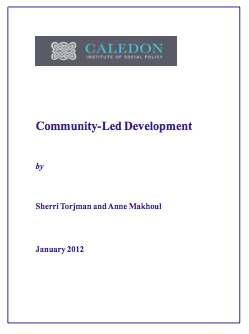 Community-led development is a unique approach to tackling local problems and building on local strengths. It is guided by several core principles.
Community-led development is a unique approach to tackling local problems and building on local strengths. It is guided by several core principles.
- The voice and views of citizens lie at the heart of community-led development.
- Community-led development seeks to empower community members to ensure they have the competencies to identify and formulate key questions.
- Community-led initiatives are guided by local leaders who typically co-create a governance process to help plan and advance the ongoing work.
- Community-led development involves the identification of key questions to be addressed. This focus is then framed as a set of aspirational goals or vision that the community seeks to achieve.
- Despite their differences, community-led development approaches are bound together by a set of guiding principles.
- Community-led development assumes that all communities and their members have strengths, skills and resources on which to build.
- Communities can harness and apply their identified assets through conversations that help create frameworks for change.
- Community-led development is an evolving process that involves the translation of aspirational goals into specific steps to be taken in respect of that vision.
- Community-led development is not a straight pathway. It is a process of continual learning and checking of progress against objectives.
- While community-led initiatives are guided by local residents, they require support from government. Governments can play three major roles in support of this work – as exemplar, investor and enabler.
Each of these principles is discussed in Section 1 of this paper. They derive from more than a decade of research and practice linked to the pan-Canadian Vibrant Communities project. This effort, in turn, drew from US practice on comprehensive community initiatives and helped shape the Inspiring Communities movement in New Zealand. The principles were applied and tested in another pan-Canadian example, Action for Neighbourhood Change, which was supported by five branches of three federal government departments.
Community-Led Development
The purpose of this paper is to explore the concept and practice of community-led development. It is an approach to tackling local problems that is taking hold throughout the world. While its expression may vary depending upon the community and the specific area of focus, there are nonetheless some common principles that hold it in place.
‘Community’ is a broad term that can refer to both physical places and groups of people with common interests or concerns. For the purposes of this discussion, the notion of community is used only in its geographic sense. Community-led development in this paper focuses on initiatives undertaken in physical places – be they neighbourhoods, cities or towns, rural or remote regions of the country, or First Nations reserves.
Section 1 of this paper identifies and briefly explores ten core principles that comprise the basis for community-led development.
Section 2 summarizes the experience of selected examples of community-led development in Canada and elsewhere in the world. It is of interest that the Inspiring Communities work from New Zealand drew upon – and was coached by – the Vibrant Communities initiative under way in Canada.
Section 3 highlights the lessons from Aboriginal community-led development. These lessons derive from personal interviews with Aboriginal leaders.
Section 4 presents the conclusions of this report and Caledon recommendations to Aboriginal Affairs and Northern Development Canada regarding the support of community-led development.
There is no question that community-led development comes with a unique set of challenges. But there is also no question that it has emerged as the most effective approach to tackling complex local problems and to building community strengths over the long term. The evidence speaks powerfully for itself.





